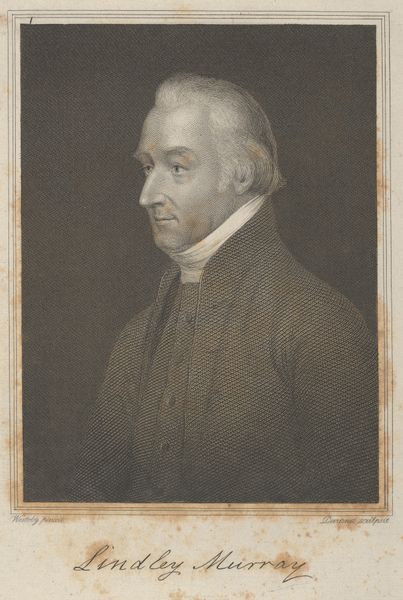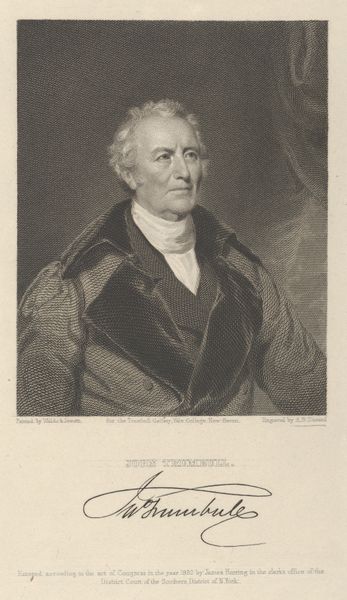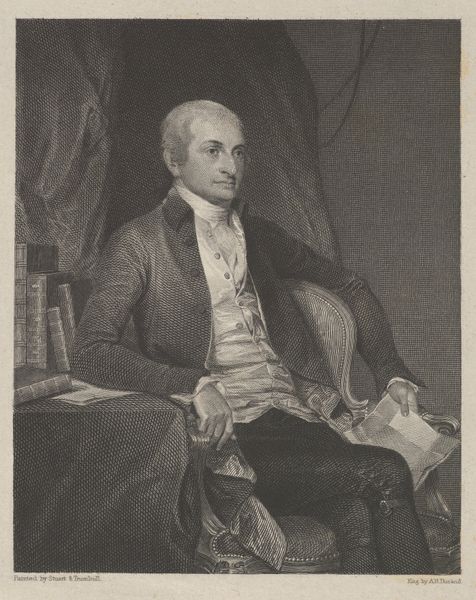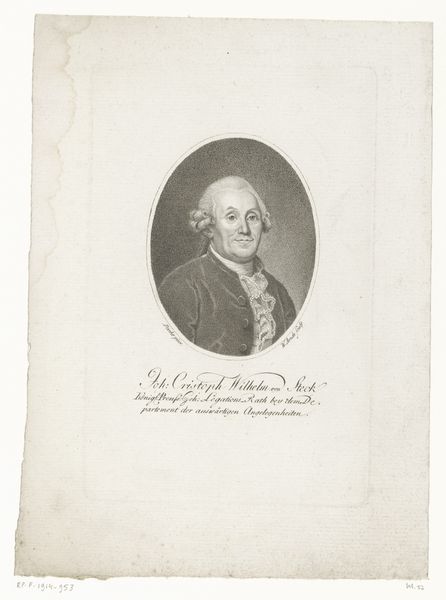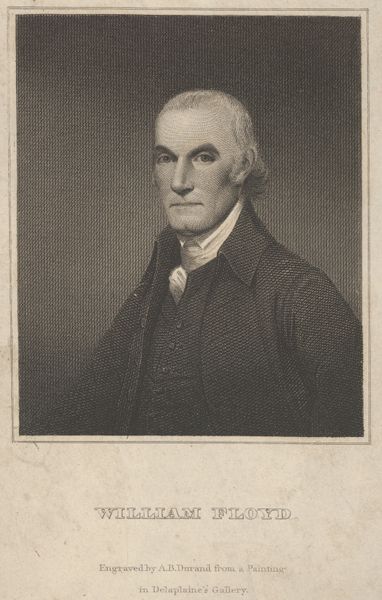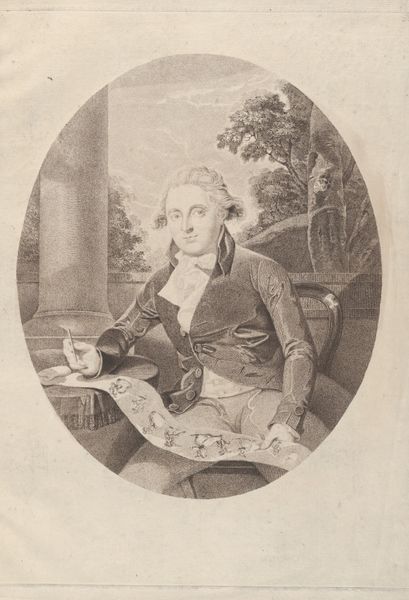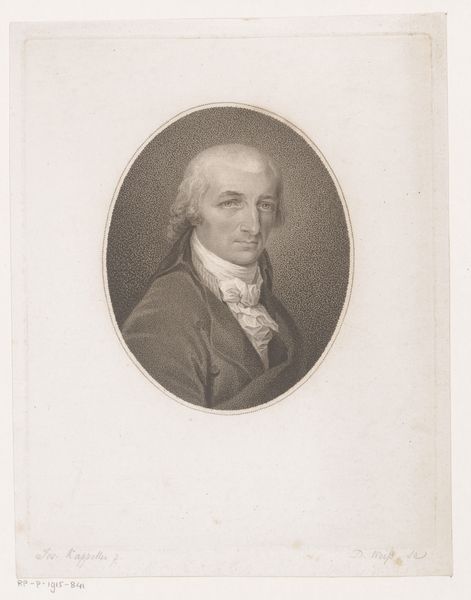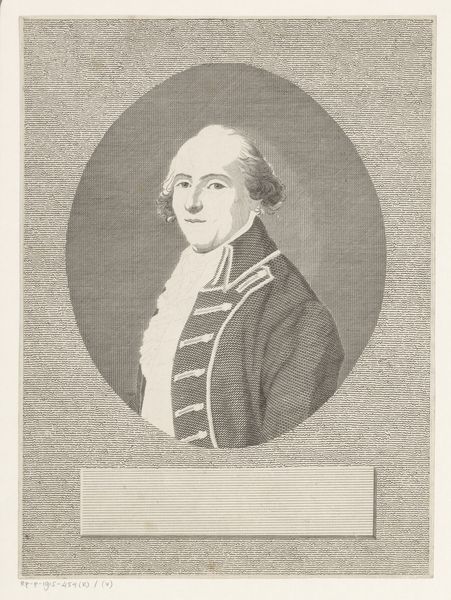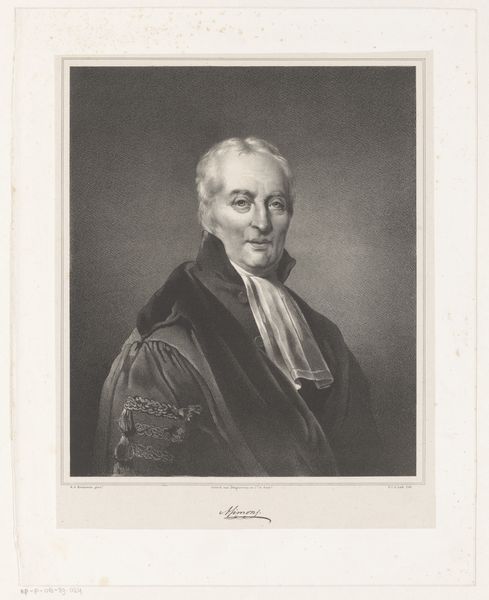
drawing, print, engraving
#
portrait
#
drawing
# print
#
portrait reference
#
men
#
history-painting
#
engraving
#
realism
Dimensions: plate: 9 1/2 x 6 5/8 in. (24.1 x 16.8 cm)
Copyright: Public Domain
Editor: Here we have Asher Brown Durand's "Joel Barlow," an engraving from 1835. It's a rather formal portrait, and I'm struck by the precise detail achieved through the engraving technique. It almost has a photographic quality, even though photography wasn't widespread at the time. What compositional elements stand out to you? Curator: The work compels an analysis rooted in the inherent visual language. The formal construction is decidedly symmetrical, focusing the gaze on Barlow’s face. Note the use of chiaroscuro; subtle modulations create form without aggressive contrast, giving it a subdued tonal scale. It doesn’t assault the senses. The carefully rendered lines composing his garment lead back to that central focal point: the face. It almost becomes an icon because of the symmetry. Editor: An icon, interesting. It’s almost like he's staged and cropped so deliberately to get a good picture for… what? A book cover, maybe? Curator: Indeed, Durand’s decision to depict Barlow holding what appears to be a manuscript subtly integrates the literary contributions into the composition. It serves to both literally represent, and connote symbolically the character of Barlow, in this structured form. How do you feel the monochromatic presentation enhances or detracts from the impact? Editor: That's a good question, I hadn’t thought about the choice to engrave this. I guess that it draws all focus into the man, into Barlow’s form itself, rather than being distracted by gaudy colors and showmanship that would not, honestly, suit the sitter. The deliberate choice to avoid colour pushes our focus to Barlow's face, its expressions and contours; really amplifying what lines the engraver uses to achieve light and tone. Curator: Precisely, Durand uses the technical mastery of engraving to abstract colour itself into the mere line that suggests tonality. It transcends realism, it isn't realism, so what does the artist say through structure and material alone? I find Durand captures more essence by removing visual noise. It’s in these structural choices and arrangements that the art resides. Editor: So, through simplifying to form and shadow, the real depth emerges! I suppose looking closely at technique helps to unlock even portraiture!
Comments
No comments
Be the first to comment and join the conversation on the ultimate creative platform.
